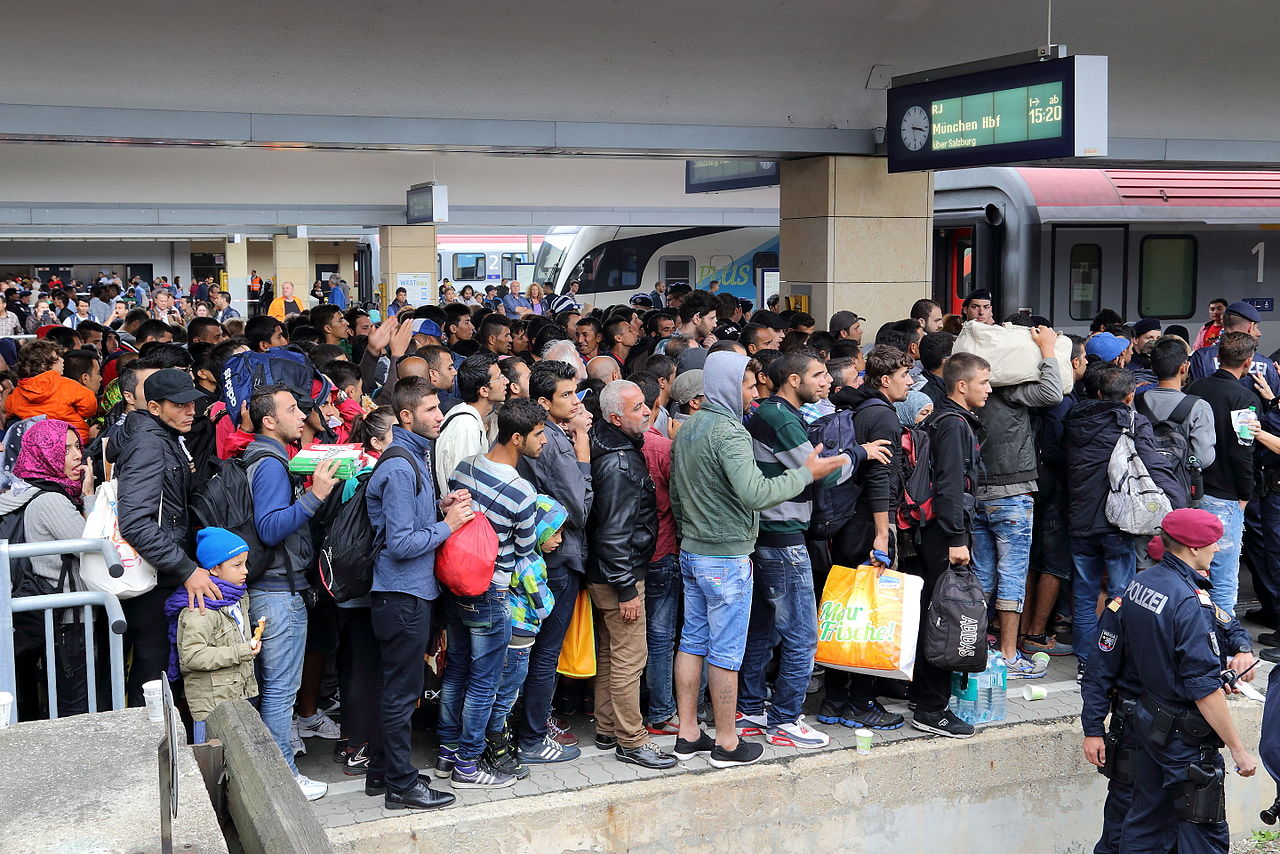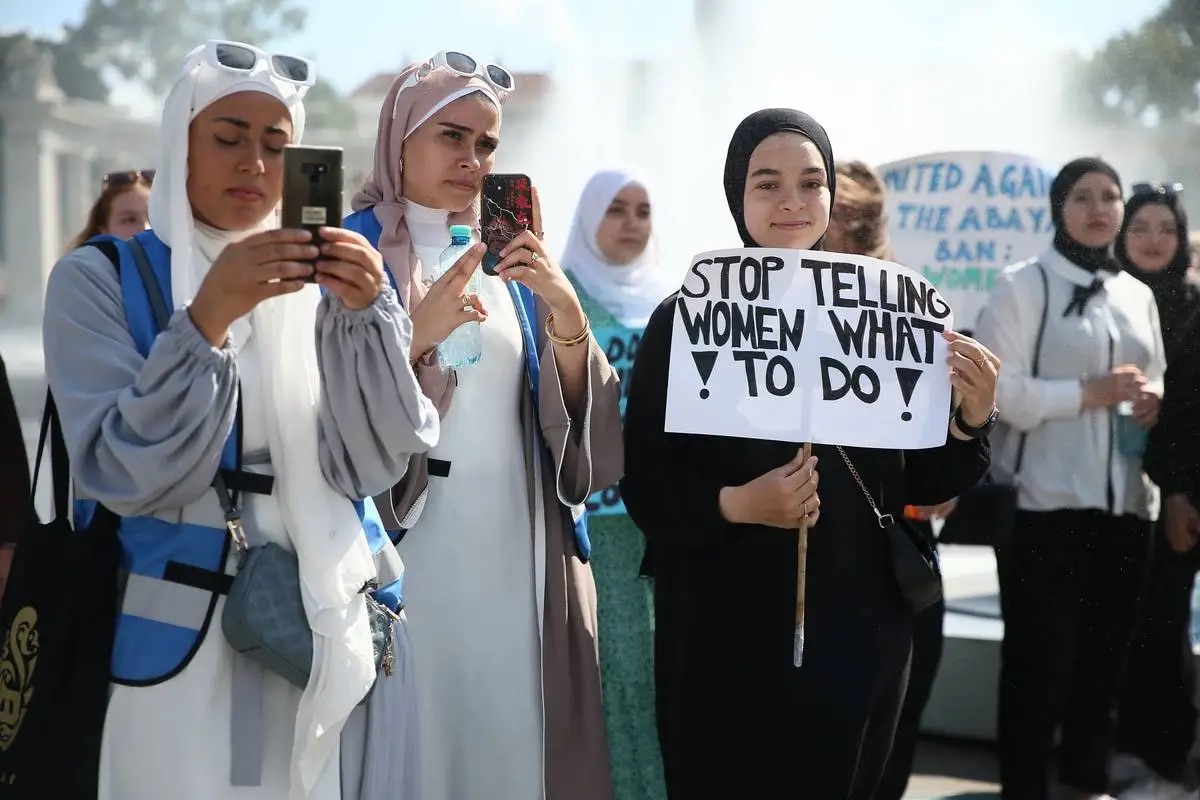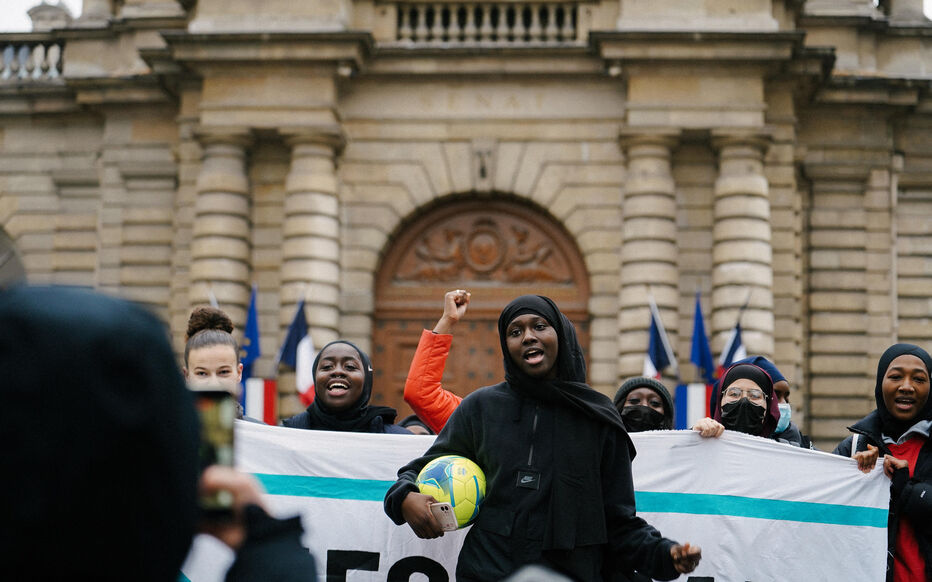The death of a 15-year-old girl, stabbed to death by her ex-boyfriend in a drugstore in the German town of Kandel, has not only sparked a public outcry but also become a case of high political salience – because the suspected killer was an Afghan refugee.
The case
The girl’s death occurred on December 27, following an altercation with her former boyfriend inside the store. She had reportedly broken up with him earlier in December; a development that the boy could not or would not accept.
After the breakup, he proceeded to pursue and stalk her, leading the girl’s parents to file a complaint with the police against him on the counts of insult, threats, and duress.1 The police responded by formally warning him that further misdemeanour on his part would trigger police action.2 This was insufficient, however, to save the girl’s life.
The consequences of the Cologne sexual assault cases
In responding to the killing, journalists are faced with a powerful dilemma. Ever since the the mass sexual assaults in Cologne, which had been perpetrated mainly by men of North African origin, the media have come to be placed under particular public scrutiny whenever a foreigner – and in particular a refugee – commits a serious offence.
Back then, journalists were accused of trying to cover-up of the sexual assaults since they only reported with considerable delay on the crimes committed in Cologne. Perhaps more significantly still, media outlets did not initially make clear that it was North African immigrants who were the presumable attackers. This earned them the charge of misplaced political correctness.
“Afghan stabs German girl to death”
Under the impression of the ‘Cologne affair’, many media outlets have felt compelled to make it explicit whenever a suspect in the context of a serious crime is a refugee, particularly if he is male and Muslim.
In the case of the girl killed in the Kandel drugstore, this has meant that Europe’s largest tabloid, Bild, titled: “Afghan (15) stabs German girl to death”3; a headline that was taken up by the country’s leading far-right newspaper, Junge Freiheit: “15-year-old Afghan kills German girl in drugstore”.4.
More respectable media outlets followed suit, such as the conservative Frankfurter Allgemeine Zeitung5 or the left-liberal Süddeutsche Zeitung6. All emphasised the nationalities of killer and victim.
Pressure on the media …
Conversely, the country’s most-watched TV news programme – the Tagesschau, running on public broadcaster ARD – was faced with massive complaints when it did not immediately report on the Kandel case.
It subsequently issued a statement on December 28 seeking to justify its stance. The Tagesschau editorial team explained that their flagship 8 pm national TV news broadcast as a rule does not report on individual “relationship crimes” (Beziehungstaten), particularly in the case of underage suspects and victims. Instead, the Tagesschau stated, such events were routinely covered by local and regional news outlets, who are part of the larger ARD family of TV channels.
Tellingly, though, the Tagesschau issued a retraction a mere eight minutes ahead of its 8 pm programme, conceding that “a small announcement” concerning the killing in Kandel would be made during the broadcast.7
… and on the police
This attempt to avoid or even pre-empt the accusation of political correctness has not remained confined to the press. In the aftermath of the Cologne sexual assaults, the police, too, had been criticised for its failure to clarify swiftly that the crimes had been committed by ‘immigrants’ or by people ‘with an immigrant background’.
Already in its initial press release on December 27, Kandel’s local police prefecture therefore stressed that the killing had been committed by “a 15-year-old Afghan” and that the victim was a “German” girl of the same age. No mention was made of the fact that the two had been in a relationship.8
Some are more equal than others
This kind of framing evidently plays ethno-national belonging to the fore so that it becomes the most salient feature of the crime.
The taz newspaper noted that a mere two days after the killing of the 15-year-old girl, a 40-year-old woman was stabbed to death by her 49-year-old companion in a shopping mall. However, no national-level news outlet bothered (or felt forced to) report on the case; neither were the Ukrainian and Russian nationalities of killer and victim of interest. The same goes for the vast majority of the 150 other women who are – statistically speaking – killed every year in Germany by their (ex-)partners.9
In other words, not all women who are killed are equally worthy of note; and some killers are more interesting than others. Disproportionate attention is given to those cases in which the perpetrator is an asylum-seeker, refugee, or immigrant. (Conversely, when the victim belongs to one of these categories, there seems to be much less concern.)
Political reactions to the killing
This tendency to establish a powerful linkage between certain ethnic, national, or racial groups on the one hand and violent misogynistic crime on the other hand is also visible in policy-making circles.
The main political response to the killing of Kandel has been calls for compulsory age-tests for all refugees claiming to be underage. The supposition underlying this demand is that many of the unaccompanied children that made their way to Germany from countries like Afghanistan are, in fact, not minors (and could therefore be treated in a harsher manner and be deported more easily).
A similar move that sought to penalise and criminalise asylum-seekers as illegitimate freeloaders was made by the CSU, right-wing Bavarian sister party to Chancellor Merkel’s CDU. The party leadership leaked a position paper calling for cuts to pocket money given to asylum-seekers, for institutional changes, and for the elimination of the freedom of movement for all asylum-seekers.10
Ineffectual remedies
Needless to say, none of this would have helped the girl killed in Kandel. The boy had already undergone an age test earlier in 2016, confirming that he is indeed a minor.11
Medical professionals have also signalled their unease with compulsory age-testing. Not only because such generalised testing would most likely violate the rights of youths – but also because the test results are generally deemed only modestly reliable, giving at best a potential age range rather than a hard-and-fast number.12
Attempts at a statistical overview
Just as age tests often turn out to be unreliable, existing statistics on the number of serious offences perpetrated by recently arrived refugees or by immigrants are of limited value, too.
The Federal Criminal Police Office (BKA) calculated that in 2016 there were 2,969 resolved cases of murder, manslaughter, and negligent homicide. In 385 of them (i.e. 13 per cent), at least one (of potentially several) offenders was an immigrant (Zuwanderer).
However, this category of Zuwanderer is defined by the BKA as comprising asylum-seekers, non-deportable persons with drastically reduced rights (Geduldete), civil war and quota refugees, and illegal aliens. Consequently, the BKA warns that these numbers cannot serve as the basis for any argument about the overall crime levels among ‘immigrants’ (however defined).13
Higher crime levels among ‘refugees’
Another study has been recently completed in the state of Lower Saxony. Commissioned by the Federal Ministry for Family and Youth, the study finds that nearly one eighth of violent crimes in the state are committed by ‘refugees’, i.e. by individuals who have asked for asylum and either are still awaiting the official decision or have already received a positive/negative reply to their demands for asylum status.14
Thus, the refugee group is clearly overrepresented in crime statistics. Partly this is due to the fact that a majority of them are young and male: young men between the ages of 14 and 30 are the leading perpetrators of violent and sexual crimes, irrespective of their ethnic, national, or religious origins.15
Differentiated results
The study also highlights large-scale differentials depending on refugees’ country of origin: Syrians, Iraqis, and Afghans – the three most important national groups – are much less likely to be embroiled in run-ins with the law than Moroccans, Algerians, and Tunisians. While 0.9 per cent of registered refugees in Lower Saxony are from the Maghreb countries, this group yields 17.1 per cent of police suspects.
In part, the study attributes this to the fact that this (heavily male-dominated) group has very little perspective of obtaining legal status in Germany, in contrast to e.g. their Syrian counterparts. “We have a huge potential of frustrated losers for whom we must find an answer”, one of the authors contends.16
While the study advocates a stringent policy of deporting illegal aliens, it also stresses the beneficial impact of family reunification, currently suspended by governmental decree. Particularly for underage refugees – such as the Afghan boy of Kandel – being with their parents has stabilising psychological and social effects.17
No space between racism and ‘political correctness’
Simplistic criminalisation of entire ethnic groups is thus not an effective way of ensuring the safety of German citizens. At the same time, crimes committed by refugees also need to be recognised openly. There are many factors that might drive a person towards crime (ranging from young age and male gender to psychological disorders and trauma, to economic hardship, and to social and cultural factors).
Yet a calm, well-informed discussion on these matters that does not degenerate into racist stereotyping right away is perhaps impossible to lead at the moment.
Hence, when the next serious crime is committed by someone who sought refuge in Germany, journalists will be faced with the same dilemma: either name the nationality of the perpetrator and be complicit in the feeding of the racist machine. Or omit this national attribute and be crucified as an acolyte of a false political correctness.
Sources
http://www.spiegel.de/panorama/justiz/kandel-15-jaehriges-opfer-hatte-sich-von-taeter-getrennt-a-1185312.html ↩
http://www.zeit.de/news/2017-12/28/kriminalitaet-mord-an-15-jaehrigerrichter-entscheidet-ueber-haftbefehl-28074803 ↩
http://www.bild.de/news/2017/news/kandel-afghane-ersticht-deutsches-maedchen-54312532.bild.html ↩
https://jungefreiheit.de/kultur/gesellschaft/2017/15jaehriger-afghane-ersticht-deutsches-maedchen-in-drogeriemarkt/ ↩
http://www.faz.net/agenturmeldungen/dpa/15-jaehriger-afghane-ersticht-maedchen-im-supermarkt-15360738.html ↩
http://www.sueddeutsche.de/panorama/kandel-jaehriger-afghane-ersticht-jugendliche-1.3807993 ↩
http://blog.tagesschau.de/2017/12/28/kandel-wie-die-tagesschau-damit-umgeht/ ↩
http://www.sueddeutsche.de/politik/asylpolitik-csu-will-geld-fuer-fluechtlinge-kuerzen-1.3811760 ↩
http://www.spiegel.de/panorama/justiz/messerattacke-in-kandel-tatverdaechtiger-laut-kreis-nicht-volljaehrig-a-1185966.html ↩
http://www.zeit.de/politik/deutschland/2018-01/asylbewerber-aerzte-alterstests-fluechtlinge-aerztekammer-frank-ulrich-montgomery ↩
https://www.bka.de/SharedDocs/Downloads/DE/Publikationen/JahresberichteUndLagebilder/KriminalitaetImKontextVonZuwanderung/KriminalitaetImKontextVonZuwanderung_2016.html ↩
http://www.sueddeutsche.de/panorama/exklusiv-mehr-gewaltkriminalitaet-durch-mehr-zuwanderer-1.3811192 ↩
http://www.spiegel.de/panorama/justiz/kandel-debatte-ueber-kriminalitaet-und-zuwanderung-a-1185470.html ↩
http://www.spiegel.de/panorama/justiz/kandel-debatte-ueber-kriminalitaet-und-zuwanderung-a-1185470.html ↩
http://www.sueddeutsche.de/panorama/exklusiv-mehr-gewaltkriminalitaet-durch-mehr-zuwanderer-1.3811192 ↩






